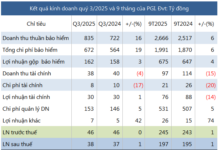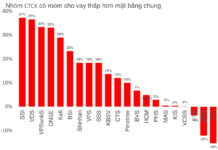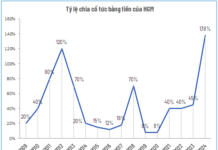The Ministry of Finance and the State Securities Commission are seeking input from organizations and individuals on the draft Circular amending and supplementing certain provisions of Circular No. 98/2020/TT-BTC dated November 16, 2020, issued by the Minister of Finance. This circular provides guidance on the operations and management of securities investment funds.
A notable aspect of this draft is the Ministry of Finance’s proposal to regulate Infrastructure Bond Funds and Money Market Instrument Funds.
Money Market Instrument Funds
According to the draft, a Money Market Instrument Fund is an open-ended fund that invests in deposits, certificates of deposit, government debt instruments, and other fixed-income assets. These investments must constitute at least 80% of the fund’s net asset value (NAV).
The permissible asset portfolio for the fund includes deposits, certificates of deposit, government debt instruments, government-guaranteed bonds, local government bonds, listed corporate bonds, and certificates of other money market instrument funds.

The fund must invest a minimum of 80% of its NAV in deposits, certificates of deposit, government debt instruments, and other fixed-income assets with a remaining maturity of 12 months or less (excluding government debt instruments).
At least 10% of the fund’s NAV must be invested in deposits, including those held in the fund’s settlement account at the custodian bank. The fund cannot invest more than 10% of an issuer’s total outstanding securities, except for government debt instruments.
The fund is prohibited from investing more than 20% of its total assets in outstanding securities and other assets. Additionally, it cannot invest more than 30% of its total assets in assets specified in points a, b, and d of Clause 3, issued by companies within the same ownership group, including parent companies, subsidiaries, companies owning more than 35% of each other’s shares or capital contributions, and groups of subsidiaries with the same parent company.
The fund is not permitted to invest in its own fund certificates. However, it can invest in certificates of other money market instrument funds managed by different fund management companies, ensuring diversification and risk management.
Infrastructure Bond Funds
According to the draft, an Infrastructure Bond Fund is a closed-end fund that invests in bonds issued for infrastructure development, government debt instruments, government-guaranteed bonds, local government bonds, deposits, and certificates of deposit. These investments must constitute at least 65% of the fund’s NAV.
The Ministry of Finance has chosen the closed-end model for Infrastructure Bond Funds. The permissible asset portfolio includes corporate bonds issued for infrastructure development, government debt instruments, government-guaranteed bonds, local government bonds, deposits, money market instruments, and other securities, similar to other funds.
The fund must invest a minimum of 65% of its NAV in bonds issued for infrastructure development, government debt instruments, deposits, and certificates of deposit. This 65% threshold ensures the fund’s objective of mobilizing capital for infrastructure development while providing flexibility in asset selection, aligning with the availability of infrastructure bonds in the market at different stages.
Infrastructure Bond Funds must comply with the investment limits for permissible assets as stipulated in Article 110 of the 2019 Securities Law.
Prime Minister Urges Swift Submission of Decree for 2% Interest Rate Support on Green Projects for Businesses
The Prime Minister has mandated the State Bank of Vietnam to submit a decree to the Government by November 2025, outlining guidelines for a 2% interest rate subsidy policy. This policy aims to support businesses borrowing capital for green, circular projects that adhere to environmental, social, and governance (ESG) standards through commercial banks.
Unlock Surplus Public Land and Assets for Business Lease: Ministry of Finance Initiative
The Ministry of Finance has announced plans to collaborate with relevant ministries, sectors, and local authorities to review and facilitate the leasing of surplus public assets, including land, factories, and infrastructure, to businesses. This initiative aims to optimize the utilization of underused public properties, providing enterprises with valuable resources to expand their operations.
Proposed 14km Extension to Accelerate Son Hai Group’s “Most Beautiful Mountain Highway in Vietnam” Before 2030
The Chairman of Son Hai Group has assessed the Nha Trang – Da Lat highway as highly complex and proposed innovative solutions such as elevated bridges, retaining walls, precast bridges, and tunnels to minimize the impact on forested areas.










































